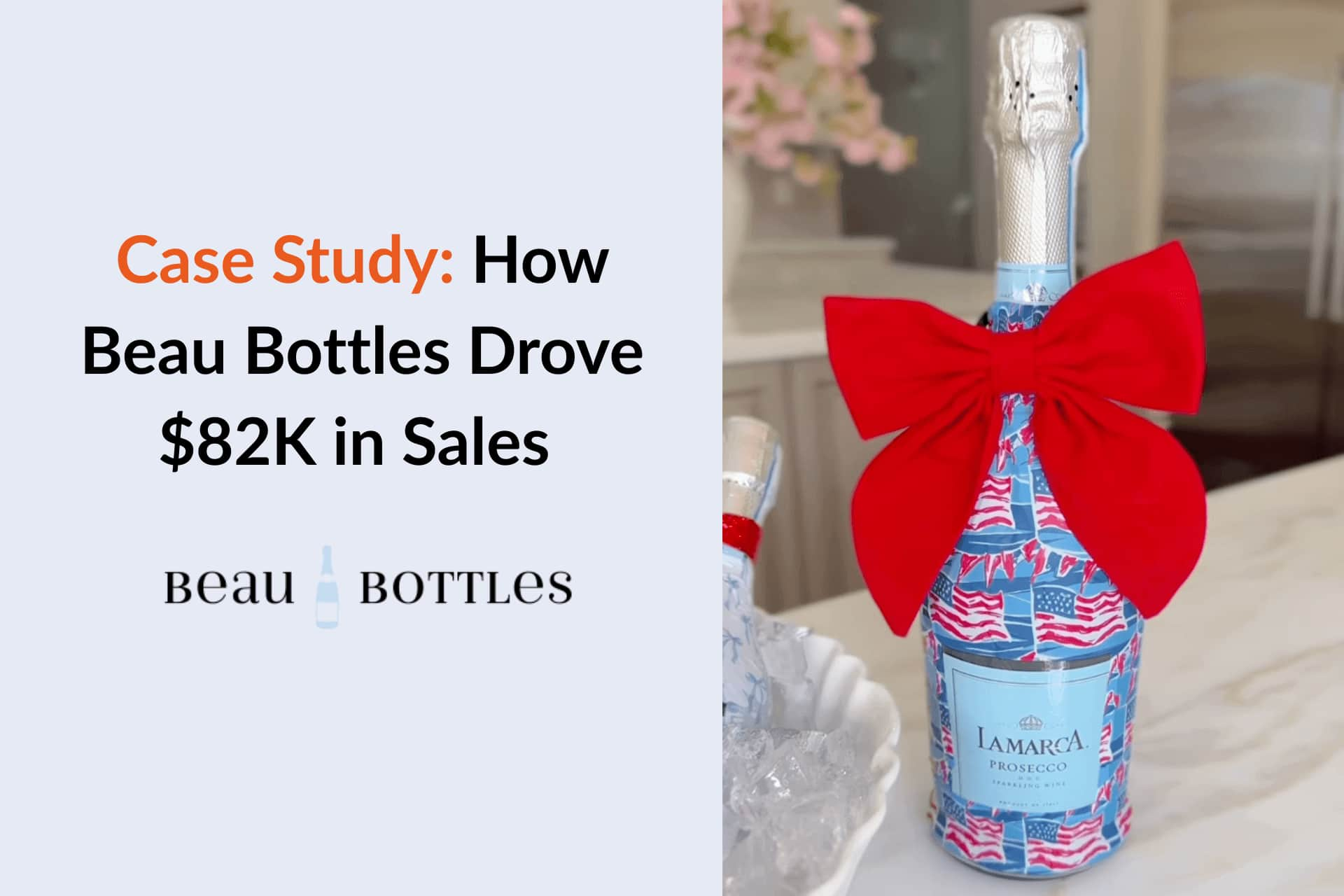





Finding the right influencer marketing platform can be tricky, especially when many brands feel limited by Lefty. Users frequently highlight its complex setup, limited influencer database for certain niches, and higher pricing compared to competitors as reasons for seeking alternatives. As influencer marketing budgets grow, according to Statista, brands want tools that are easier to use, more cost-effective, and scalable for both eCommerce and agency needs.
In this article, we’ll walk through the top 10 Lefty alternatives, breaking down their features, pricing, and who they’re best for. Whether you’re running a D2C Shopify brand, a fast-scaling Amazon store, or a marketing agency managing multiple clients, this comparison will give you clarity on which tool fits your goals.
Here’s a detailed section with three specific reasons why users look for Lefty alternatives, rounded in the feedback from user reviews:
Marketers often describe Lefty as not the most intuitive tool, with too many buttons and tabs that complicate navigation. Teams frequently require multiple onboarding sessions, which slows down campaign execution and makes adoption harder for fast-moving brands. (G2)
While Lefty offers an extensive database, users report that filters aren’t strong enough to narrow searches effectively, leading to time-consuming influencer discovery. On top of that, plans cap the number of influencers you can monitor, forcing brands to pause campaigns or upgrade to higher tiers.
Users have also raised concerns about limited data processing and missing competitor insights, particularly the lack of Instagram Stories in ranking dashboards. For brands that rely heavily on full-funnel analytics, this restricts their ability to measure campaign ROI with confidence. (G2)
Our comparison focuses on several key aspects:
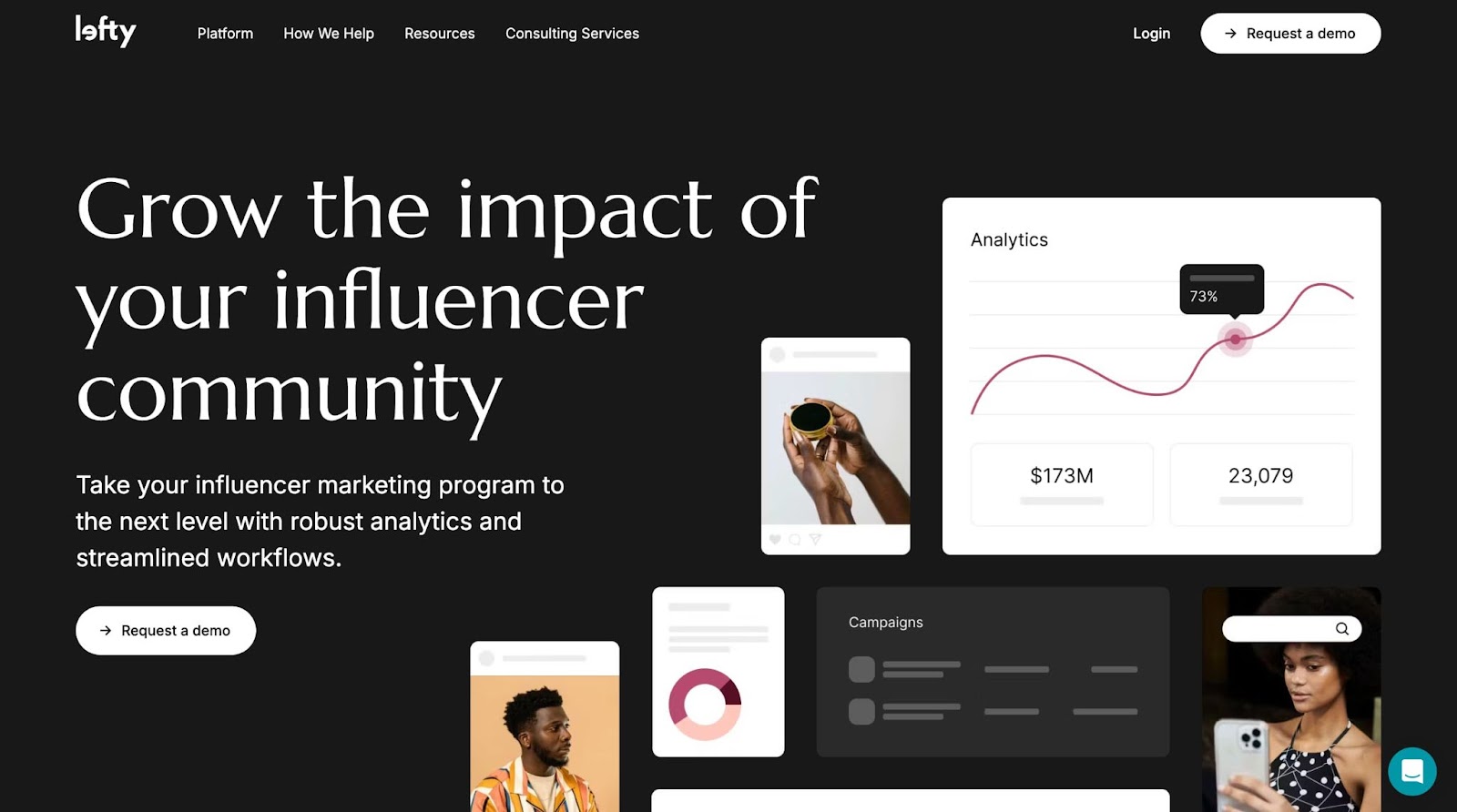
Platform Coverage: Instagram, TikTok, X (Twitter), YouTube, Snapchat, Weibo, Douyin, and Red.
Best For: Enterprise brands, agencies, and eCommerce businesses that need centralized campaign management, strong analytics, and integrated affiliate and gifting workflows. It is particularly well-suited for fashion, lifestyle, and luxury sectors where detailed data insights are crucial.
Pricing: Lefty pricing remains undisclosed. However, according to our research and other review pages, their rates are:
Reviews: 4.7 / 5.0 (G2)
Ease of Use (UX/UI): Users often describe Lefty as feature-rich but not immediately intuitive. The interface includes many tabs and settings, which can feel overwhelming at first and require repeated onboarding. Once mastered, however, it provides powerful functionality and highly customizable campaign management.
Customer Support: Customer support receives strong feedback, with users highlighting dedicated account managers and approachable support teams. Many reviewers note that while onboarding can be complex, the support staff are responsive and helpful in clarifying workflows and setting up integrations like Shopify and Salesforce.
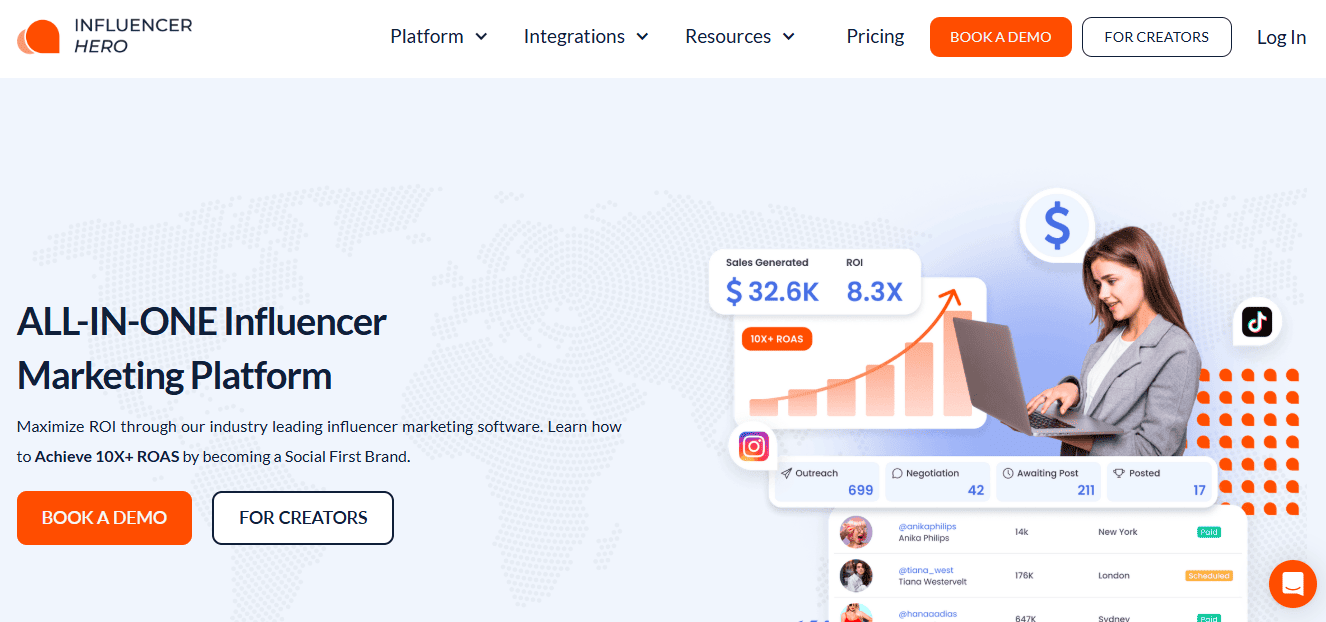
Platform Coverage: Instagram, TikTok, YouTube, Facebook, Pinterest, Snapchat, X, Twitch
Best For: eCommerce brands on Shopify or Amazon, D2C businesses, and agencies that want an all-in-one influencer marketing solution with integrated campaign management, affiliate tracking, and content usage rights.
Pricing: (Plans are monthly and scalable.)
Reviews: 5.0 / 5.0 (Capterra)
Ease of Use (UX/UI): Known for its intuitive design and streamlined dashboard, making it easy for teams to launch and manage campaigns without a steep learning curve. Automated workflows and customizable outreach templates reduce manual work, while advanced search and reporting features are accessible even for non-technical users.
Customer Support: Customer support is one of Influencer Hero’s strongest advantages. Every plan includes a dedicated account manager from day one, with optional strategy consultations to help guide growth. Users benefit from 24/7 real-human live chat, responsive email support, an extensive Help Center with tutorials, and even private Slack channel access for Pro plan customers.
Lefty is tailored for large enterprises, offering custom contracts and a comprehensive feature set that often requires extensive onboarding. In contrast, Influencer Hero combines advanced capabilities with an intuitive interface, transparent pricing, and flexibility, making it a strong option for brands across all sizes.
Another key difference lies in integrations and support. While Lefty has added Shopify support, it remains primarily enterprise-focused. Influencer Hero, on the other hand, was built to connect seamlessly with eCommerce platforms like Shopify and Amazon. Its 24/7 real-human support and dedicated account managers provide faster adoption and ongoing strategic guidance, helping teams of any size navigate campaigns with confidence.
Ultimately, brands seeking scalable solutions with intuitive design, clear pricing, and strong support will find Influencer Hero a compelling alternative, while Lefty continues to cater to enterprises needing highly complex analytics across multi-market teams.
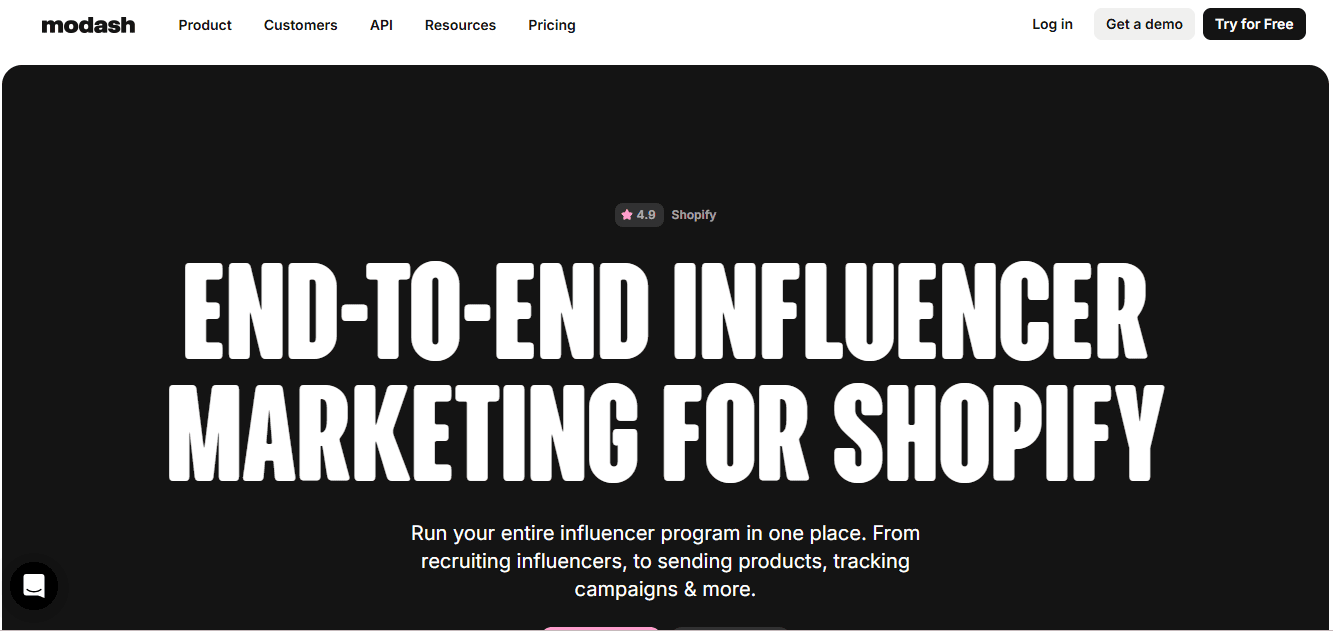
Platform Coverage: Instagram, TikTok, YouTube, and offers profile recognition for platforms like X, Snapchat, and others.
Best For: Modash is best for eCommerce brands and DTC companies on Shopify that want to streamline influencer discovery, outreach, and affiliate campaign management. It’s particularly useful for businesses scaling globally, as it offers access to a massive creator database and advanced filtering options.
Pricing: Modash offers free trials to both their Essentials and Performance plan.
Reviews: 4.9 / 5.0(Capterra.com)
Ease of Use (UX/UI): Users often highlight that Modash is straightforward to navigate, with a clean design that makes influencer discovery and campaign tracking efficient. The advanced filters and AI-powered search are intuitive, helping brands find the right creators faster.
Customer Support: Modash is praised for its responsive and helpful customer support team. Users report that onboarding is smooth, with guidance provided during setup. Ongoing support is also valued, particularly when troubleshooting campaign tracking or integrating Shopify features.
Explore our guide to the top 10 Modash alternatives for effective influencer marketing, complete with pricing and reviews.
Lefty positions itself as a robust, enterprise-grade platform with a strong focus on advanced analytics, competitor benchmarking, and global campaign management. It offers multi-platform support, and is trusted by high-profile fashion and lifestyle brands. However, Lefty does not publicly share pricing, and its broad feature set may come with a steeper learning curve.
Modash, on the other hand, focuses on doing a few things extremely well, discovery, outreach, affiliate management, and Shopify integration. It offers one of the largest public creator databases and AI-powered tools like lookalike search and “Find Your Fans.” Pricing is transparent, starting at $199/month for Essentials and $499/month for Performance, making it easier for smaller and mid-sized brands to adopt.
In short, Lefty is better suited for large enterprises needing full-scale campaign management and advanced benchmarking across multiple regions and platforms, while Modash is ideal for eCommerce and DTC brands seeking a more agile and cost-effective solution.
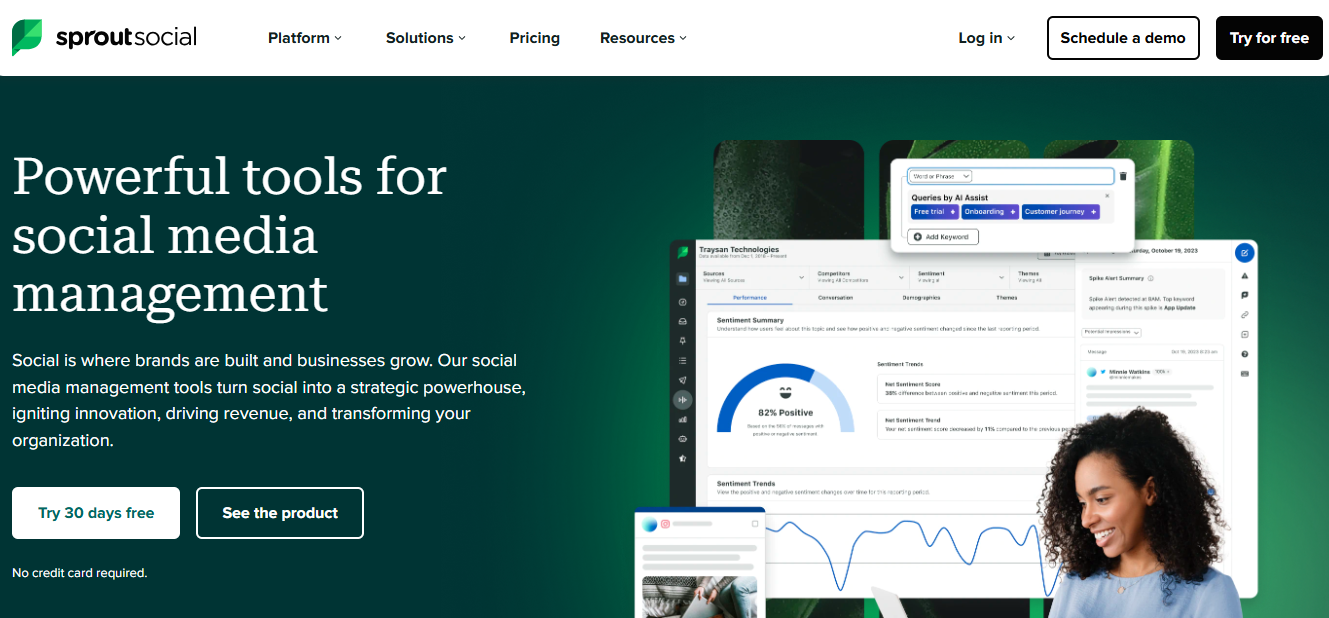
Platform Coverage: SproutSocial supports Instagram, TikTok, and YouTube, focusing on core social channels for content publishing, analytics, and influencer collaboration.
Best For: Enterprise brands and agencies that require advanced analytics, brand safety tools, and strategic influencer campaign management. It is particularly suited for companies with larger budgets looking for deep reporting and competitor benchmarking.
Pricing: Starts at $1,599/month per user. Each extra seat is $600/month, billed annually.
Reviews: 4.5 / 5.0 (Capterra.com)
User Experience (UX/UI): Users find Sprout Social’s dashboard polished and professional, with an organized workflow that makes managing campaigns clear. The platform is praised for its intuitive reporting and the ability to generate detailed, exportable reports quickly. However, some note that the depth of features may require time to fully master.
Customer Support: Customer support is generally rated highly, with users appreciating Sprout Social’s onboarding and training resources. Enterprise users highlight the responsive support team and access to detailed documentation. Some note that with its high pricing, they expect – and often receive, a premium level of assistance.
Check out our in-depth review of the top 10 Sprout Social alternatives, complete with pricing comparisons, feature breakdowns, pros, cons, and more.
Lefty positions itself as an all-in-one influencer marketing platform with strong discovery, campaign management, affiliate tools, and competitive benchmarking. It supports a wider range of platforms, making it particularly attractive for global enterprise brands.
Sprout Social, while also enterprise-focused, differentiates itself with advanced brand safety tools, its AI-powered Brand Fit Score, and deep reporting features. Its content approval workflows add extra compliance and control, especially useful for industries with strict brand guidelines. However, Sprout Social comes at a steep cost of $1,599 per user/month with a 12-month minimum, which may put it out of reach for smaller teams.
In summary, Lefty is the stronger choice for enterprises that want end-to-end global campaign execution across multiple platforms, while Sprout Social is best for brands that prioritize analytics, brand safety, and compliance, and have the budget for premium enterprise pricing.
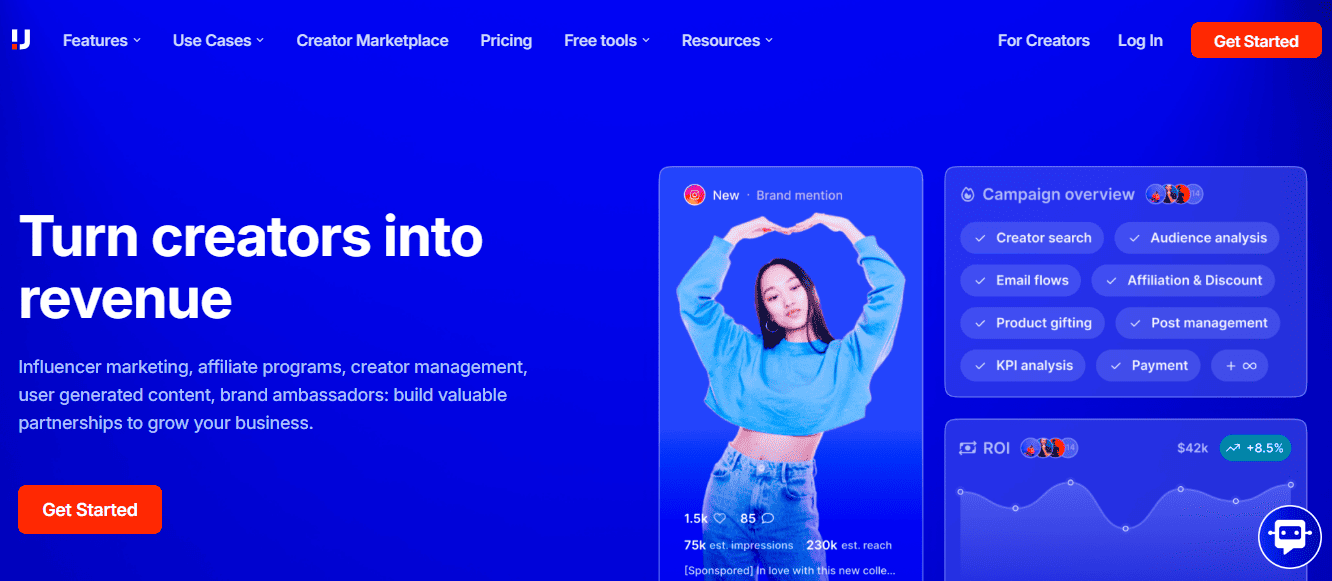
Platform Coverage: Instagram, TikTok, YouTube, X , Twitch, Pinterest, WordPress blogs.
Best For: eCommerce brands and Amazon sellers looking to connect influencer marketing directly to sales. It’s particularly valuable for companies that want to leverage their customer base to identify potential creators and maximize ROI through affiliate and gifting programs.
Pricing: Upfluence offers annual contracts with the following pricing.
Reviews: 4.6 / 5.0 (G2)
Ease of Use (UX/UI): Users note that the platform is comprehensive and offers a wide range of features in one place, which reduces the need for multiple tools. However, new users sometimes mention a learning curve due to the breadth of its capabilities. Once familiar, the workflows for discovery, outreach, and tracking are seen as efficient.
Customer Support: Customer support is generally well-regarded, with dedicated onboarding and assistance for campaign setup. Some users highlight that responses can take time during peak periods, but the team is knowledgeable and helpful in troubleshooting. Support is particularly valued when integrating Shopify or Amazon features.
Lefty shines in advanced analytics, competitor benchmarking, and large-scale campaign reporting, making it a favorite among enterprise brands and agencies managing global campaigns. Its strengths include a broad influencer database, detailed reporting, and expert consulting services.
Keep in mind, pricing is not publicly listed, and onboarding may take some time due to the platform’s complexity.
Upfluence, by contrast, is laser-focused on eCommerce performance. With Shopify and Amazon integrations, it helps brands track ROI from influencer campaigns, identify influencers within their own customer base, and manage affiliate programs with clear revenue attribution. Pricing is transparent at $1,276 per month (annual billing), making budgeting straightforward, though it sits at the higher end compared to some alternatives.
Bottom line: Choose Lefty if your priority is in-depth analytics and competitor insights for large-scale campaigns. Go with Upfluence if you’re an eCommerce brand looking to directly tie influencer marketing to measurable sales results.
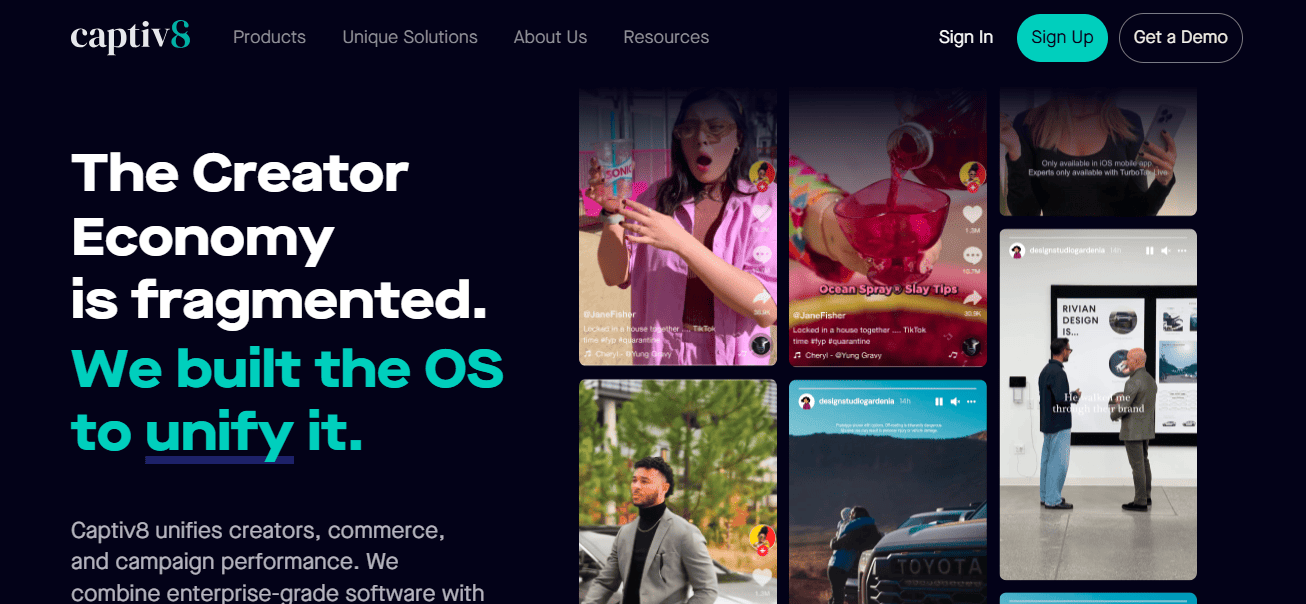
Platform Coverage: Captiv8 supports influencer campaigns across Instagram, YouTube, TikTok, Facebook, Twitter, and Pinterest.
Best For: Enterprise-level brands and agencies that want to run large-scale influencer campaigns with advanced data, analytics, and reporting. It’s particularly suited for organizations with high budgets that prioritize in-depth campaign tracking and creator commerce tools.
Pricing:
No monthly or customizable plans are available; pricing is rigid and enterprise-focused
Reviews: 4.6 / 5.0 (G2)
Ease of Use (UX/UI): Users say the platform is feature-rich but has a steep learning curve due to the depth of tools available. While it offers powerful filters and reporting customization, navigating everything can feel overwhelming for new users. Once mastered, its workflows are efficient for teams managing multiple campaigns.
Customer Support: Customer feedback on support is mixed, with several users reporting slow or unresponsive service when handling account issues. Some brands and creators have mentioned difficulties with payment resolution, which impacts trust. However, larger enterprise clients report better access to account managers.
Explore our guide on the top 10 Captiv8 alternatives to find the best tools for effective influencer marketing.
Captiv8 is heavily enterprise-oriented, requiring a minimum $25K annual contract and charging extra for creator commerce features ($20–30K/month). This makes it best suited for Fortune 500 brands or agencies with significant influencer budgets. Lefty, while also enterprise-focused, offers a broader all-in-one workflow with discovery, CRM, affiliate programs, and benchmarking included natively. Its pricing is less transparent but doesn’t come across as rigid or as high of an entry barrier as Captiv8.
Lefty, on the other hand, provides a more holistic and data-rich solution that balances e-commerce, campaign automation, and enterprise dashboards, making it appealing for brands and agencies that want scalability without being locked into costly add-ons.
In short: choose Captiv8 if you’re an enterprise brand with a big budget needing advanced commerce integrations and global brand monitoring. Choose Lefty if you want a comprehensive, data-driven influencer marketing platform with stronger e-commerce alignment and more flexible overall positioning.
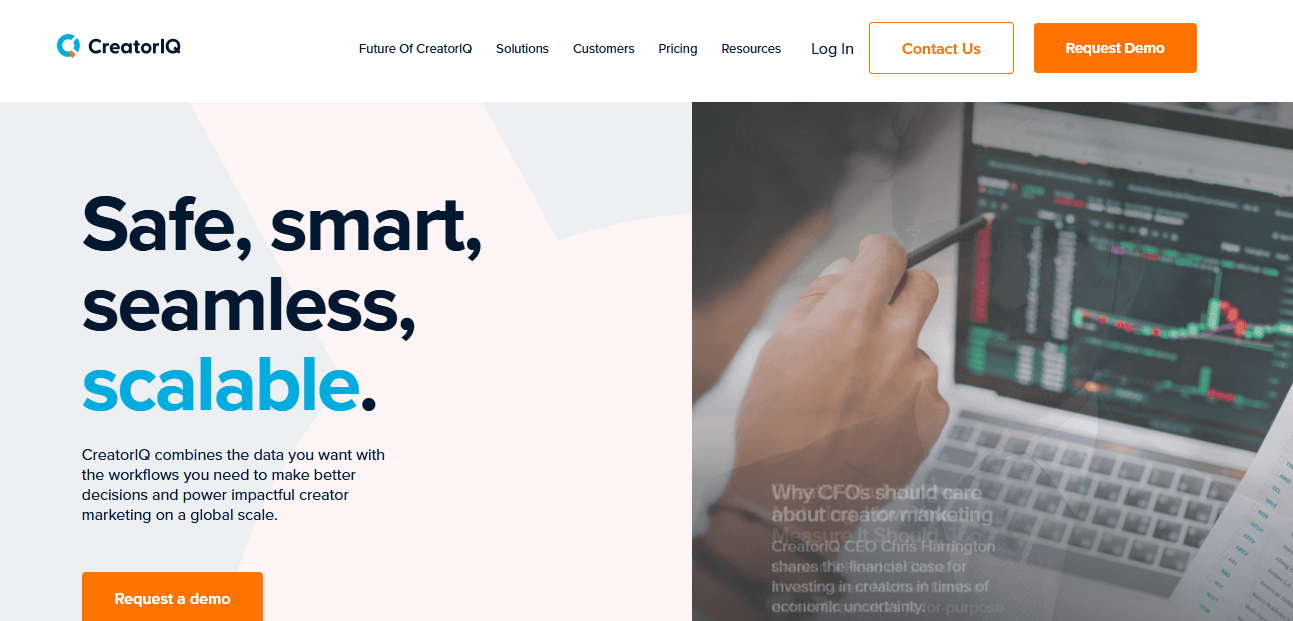
Platform Coverage: Instagram, TikTok, YouTube, Facebook, Pinterest, Twitch, X.
Best For: CreatorIQ is best for global brands and enterprises looking for an end-to-end influencer marketing solution that covers discovery, activation, campaign management, payments, and reporting. It’s particularly strong for organizations seeking reliable API-backed data and strategic support from a platform trusted by top companies like Disney, Coca-Cola, and Lululemon.
Pricing: All plans are billed annually.
Reviews: 4.6 / 5.0 (G2)
Ease of Use (UX/UI): Users say the platform is robust and professional, with a clean interface designed for enterprise teams. However, its wide range of features means there’s a learning curve during onboarding. Once set up, the workflows and live reporting links make campaign execution and sharing with stakeholders very efficient.
Customer Support: CreatorIQ is praised for its customer success approach, providing dedicated implementation managers and strategic guidance. Users highlight responsive onboarding and ongoing support, although some note that access to advanced support is more tailored to higher-tier clients.
Discover our curated list of the top 10 CreatorIQ alternatives to elevate your influencer marketing strategy and drive better campaign results.
Both Lefty and CreatorIQ serve enterprise-level influencer marketing needs but approach them differently.
CreatorIQ has positioned itself as the “infrastructure” of influencer marketing with deep integrations into social platforms through direct APIs, offering reliable, real-time data. Lefty, while also data-rich, focuses on e-commerce alignment with features like affiliate tracking, gifting, and competitive benchmarking, making it highly appealing for retail and consumer brands.
In terms of pricing, CreatorIQ is more rigid and expensive, with entry-level plans starting at $35,000/year and scaling up to $200,000/year, plus add-ons like Creator Connect. Lefty’s pricing is not publicly disclosed but tends to be positioned as more accessible, with flexibility depending on scope and enterprise size.
CreatorIQ is often chosen by the largest global brands due to its compliance, reporting sophistication, and integrated payments, while Lefty may be a better fit for brands wanting a balance of powerful discovery, campaign workflows, and strong e-commerce capabilities without as steep an entry cost.
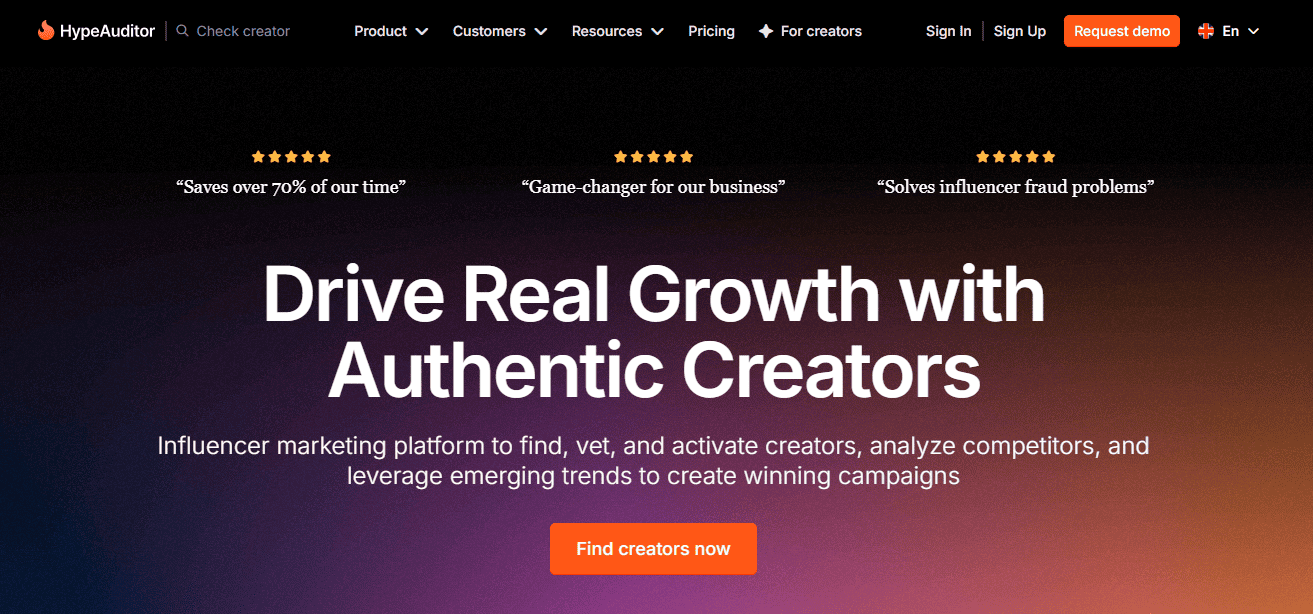
Platform Coverage: Instagram, TikTok, YouTube, Twitch, X (Twitter), Snapchat
Best For: HypeAuditor is best for brands and agencies looking for strong influencer discovery and fraud detection tools, particularly those who want to ensure authentic audiences and accurate campaign ROI. It’s a good fit for data-driven teams that need customizable pricing and integrations for e-commerce and affiliate tracking.
Pricing: Custom plans based on usage. Flexible contract terms depending on platform access, campaign volume, and number of reports.
Reviews: 4.5 / 5.0 (G2)
Ease of Use (UX/UI): Users say the platform is intuitive once familiar, with clean dashboards and customizable reports. However, some find the wide range of discovery and campaign tools overwhelming at first. The onboarding period is important for learning how to fully leverage its features.
Customer Support: Customer support is considered reliable, especially during onboarding, with training and tutorials to guide new users. Some reviews note that faster responses are available for enterprise clients, while smaller plans may receive slower support turnaround.
Discover our breakdown of the top 10 HypeAuditor alternatives to compare features, pricing, and reviews, and make an informed decision on the right platform.
HypeAuditor is best known for its robust fraud detection, audience authenticity scores, and AI-powered influencer discovery. It provides strong e-commerce integrations, but its registered influencer pool is relatively small compared to its broader searchable database.
Lefty, meanwhile, provides an all-in-one workflow with discovery, casting, campaign management, affiliate tracking, and competitive benchmarking, making it stronger for end-to-end campaign execution.
In terms of pricing, HypeAuditor is more flexible, with modular options starting around $10,000/year and customizable plans, plus a short free trial. Lefty does not disclose pricing publicly but positions itself toward enterprise and high-growth brands, often with a higher overall investment than HypeAuditor’s entry tier. However, HypeAuditor’s lower entry cost comes with trade-offs in terms of complexity and a smaller direct creator network.
Choose HypeAuditor if your focus is influencer discovery, audience authenticity, and fraud detection with flexible pricing. Choose Lefty if you need a complete, scalable influencer marketing solution with stronger campaign workflows, affiliate tools, and enterprise-level dashboards.
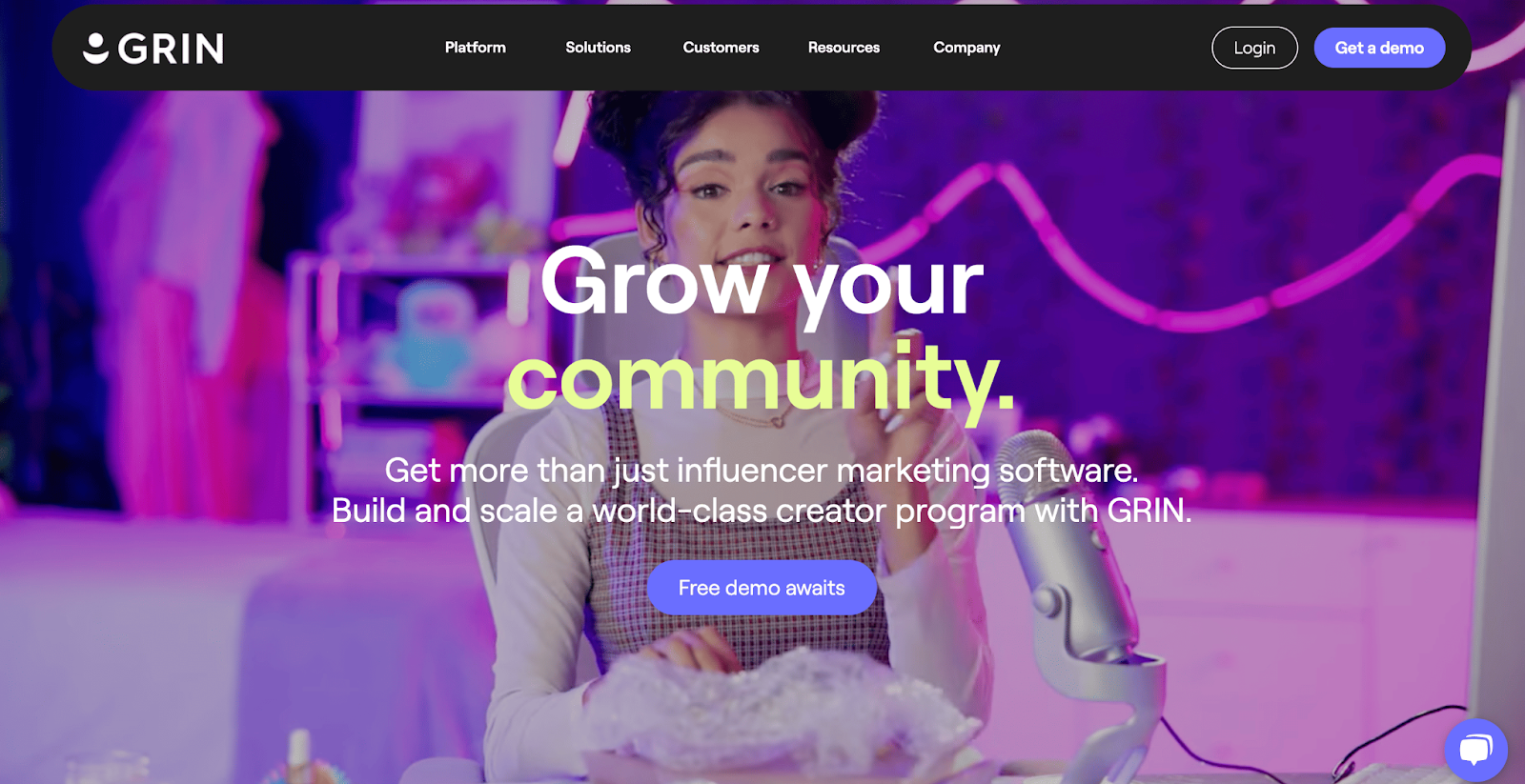
Platform Coverage: Instagram, TikTok, YouTube, X, Twitch, Snapchat
Best For: GRIN is best for eCommerce and DTC brands that want an all-in-one influencer marketing solution fully integrated with Shopify, WooCommerce, and other commerce platforms. It’s ideal for brands focused on product seeding, gifting, UGC collection, affiliate tracking, and ROI measurement in a single workflow.
Pricing: Plans start at $25,000 per year, with monthly payments available and a required 12-month commitment; typical monthly costs range from $2,500 to over $10,000 depending on usage, though pricing transparency may vary based on selected features.
Reviews: 4.5 / 5.0 (G2)
Ease of Use (UX/UI): Users highlight that GRIN has a clean and intuitive interface once onboarded, making campaign management and gifting workflows smooth. However, some mention bugs, performance issues, and glitches during discovery or content uploads, which can slow down larger-scale campaigns.
Customer Support: Feedback on customer support is mixed. Some users report positive experiences with onboarding and dedicated strategists, while others mention long delays, unresponsive support tickets, and billing issues. Enterprise clients often receive stronger follow-through than smaller teams.
GRIN is designed specifically for eCommerce and DTC brands, offering deep integrations with Shopify, WooCommerce, Magento, and Salesforce Commerce. It excels at product seeding, gifting workflows, affiliate tracking, and ROI attribution, making it ideal for brands with high-volume product catalogs.
Lefty, in contrast, takes a broader enterprise approach. It provides robust influencer discovery, casting tools, affiliate management, competitive benchmarking, and consulting services, catering to agencies and global brands with complex campaigns.
Pricing highlights the difference further:
GRIN starts at $25,000/year ($2,500/month) with fixed annual contracts, scaling higher with additional features. While powerful, these rigid tiers can be challenging for smaller teams.
Lefty doesn’t disclose pricing publicly, but it typically targets enterprise budgets and offers more flexibility than GRIN’s fixed structure.
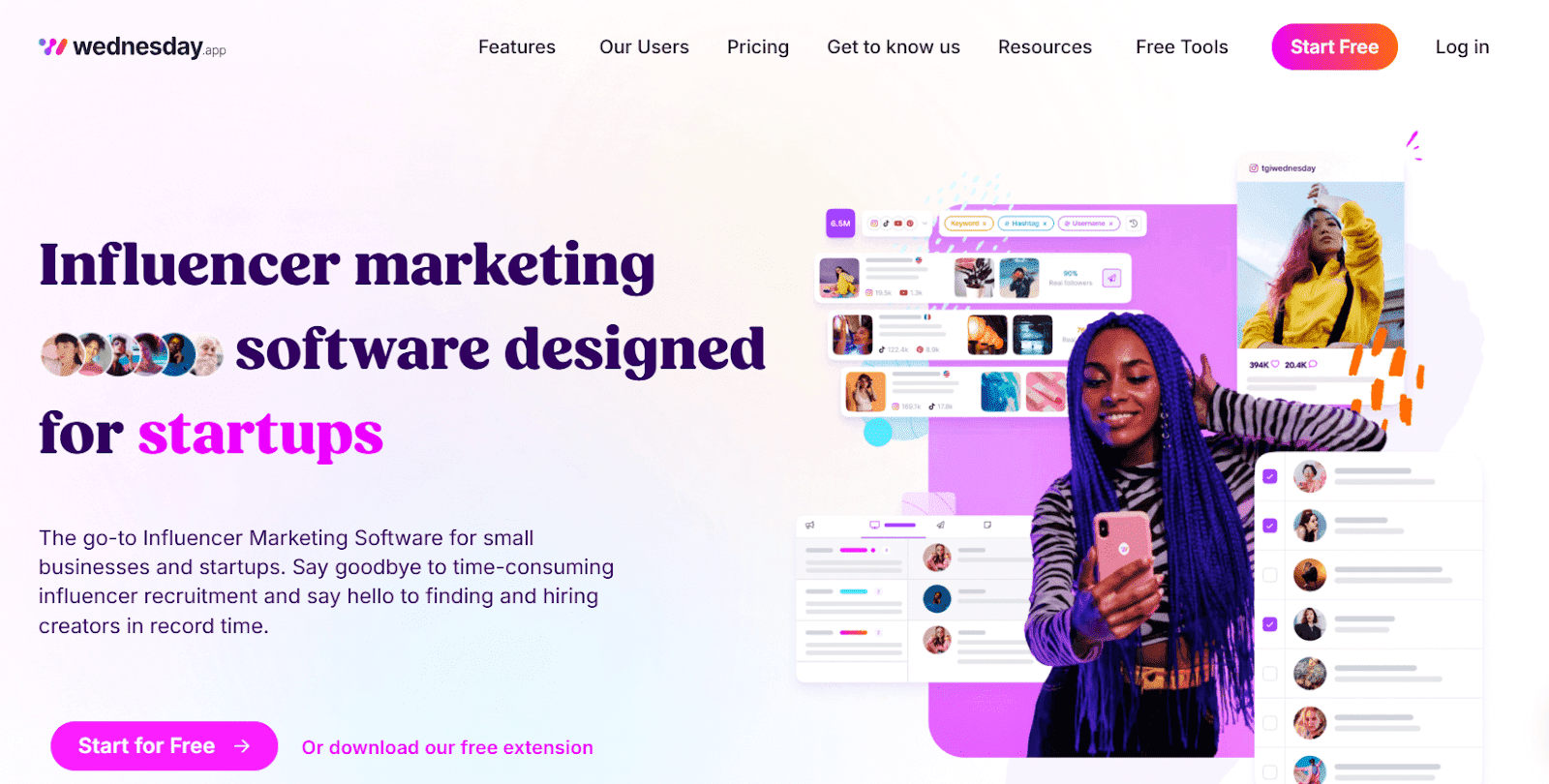
Platform Coverage: Instagram, TikTok, YouTube, Twitter (X), Twitch, Pinterest, WordPress
Best For: Wednesday.App is best for small businesses and emerging DTC brands that want an affordable, lightweight influencer marketing tool to manage discovery, outreach, and relationships. It’s particularly suited for startups or boutique brands running influencer campaigns without the budget for enterprise platforms.
Pricing:
Reviews: 5.0 / 5.0 (Product Hunt)
Ease of Use (UX/UI): Users describe Wednesday as simple and user-friendly, with a clean interface that avoids unnecessary complexity. The streamlined design makes it easy for beginners to get started, though more advanced users may find its limited integrations restrictive. Its AI-assisted messaging also reduces time spent drafting outreach.
Customer Support: Customer support is generally responsive, with helpful onboarding resources and tutorials. Smaller teams appreciate that there’s no steep learning curve, but some users note that support is more basic compared to enterprise platforms, focusing primarily on troubleshooting and platform guidance.
Lefty and Wednesday.App cater to very different audiences.
Lefty is an enterprise-grade platform designed for large brands and agencies, offering a massive influencer database, robust campaign automation, affiliate program management, competitive benchmarking, and consulting services. In contrast, Wednesday is designed specifically for small businesses and startups, offering a “lightweight” stack that covers discovery, CRM, outreach, and reporting in a simple and affordable package.
Pricing is one of the biggest differentiators. Wednesday provides a free starter plan and paid tiers starting at just $79/month, making it highly accessible for brands with limited budgets. Lefty, by contrast, operates on custom enterprise-level pricing and typically requires a much larger investment.
Choose Wednesday.App if you’re a small brand or DTC business just beginning with influencer marketing and need a cost-effective, easy-to-use platform. Choose Lefty if you’re an enterprise or agency looking for advanced analytics, affiliate tools, and large-scale campaign capabilities with consulting support.
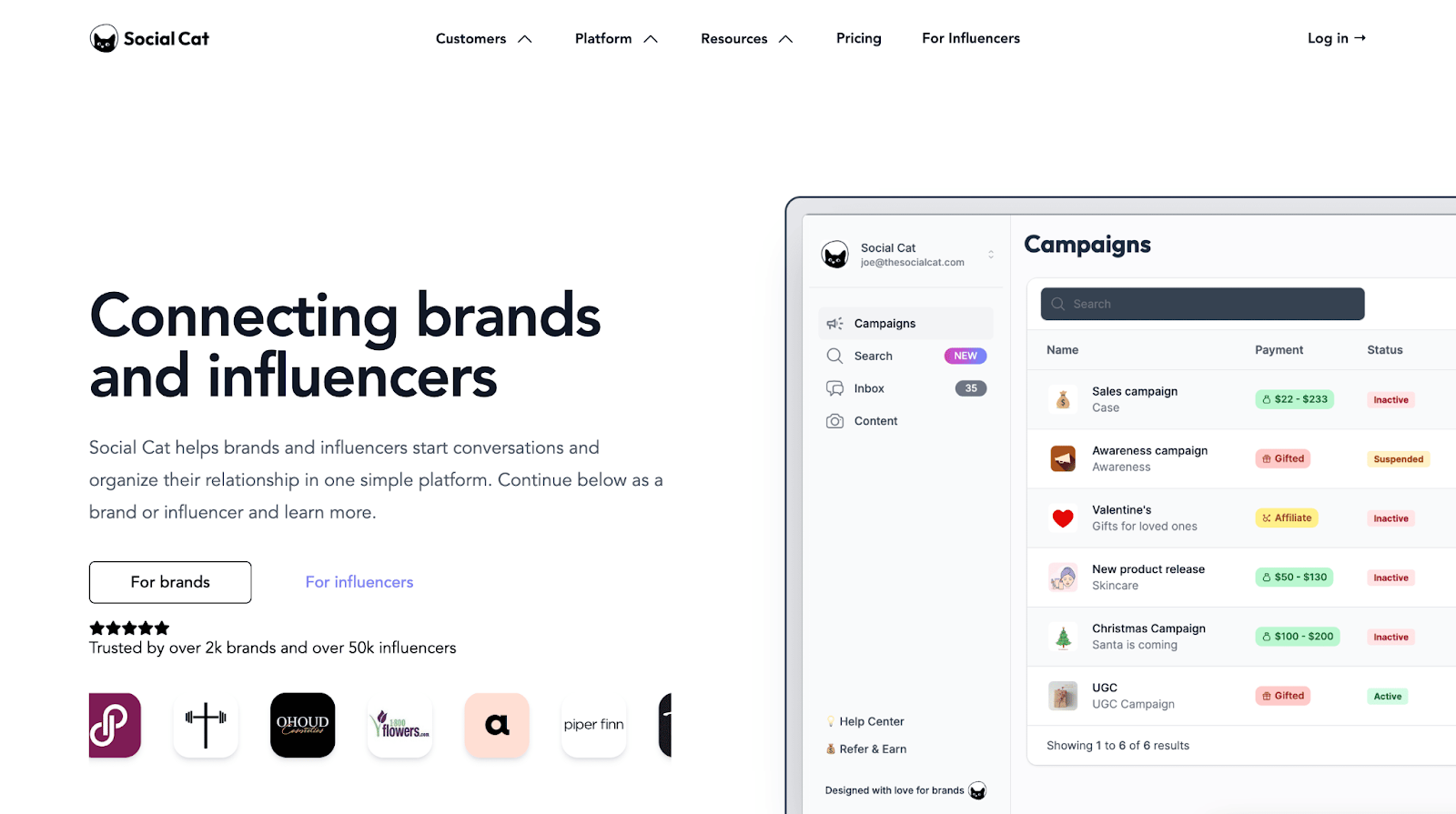
Platform Coverage: Instagram and TikTok.
Best For: Small and medium-sized brands that want a simple, affordable way to run influencer campaigns without the complexity of enterprise tools. It’s especially suited for startups and growing DTC brands looking to scale UGC collaborations on Instagram and TikTok.
Pricing:
Reviews: 4.3/5.0 (Trustpilot)
Ease of Use (UX/UI): Users say the platform is highly beginner-friendly, with a straightforward interface that makes setting up campaigns and reviewing applications simple. Its clean workflow eliminates unnecessary complexity, making it easy for small teams to manage collaborations.
Customer Support: Customer support is generally reliable and responsive, with email support for all plans and priority service available on higher tiers. Users appreciate the clear onboarding guidance but also point out that support is limited compared to enterprise platforms.
Lefty is an enterprise-focused platform designed for large brands and agencies that need advanced discovery, campaign automation, affiliate tracking, competitive benchmarking, and consulting services.
Social Cat, by contrast, is designed for small to medium-sized brands seeking simplicity and affordability. Its focus is on influencer discovery, campaign applications, and UGC management without overwhelming users with advanced or expensive features.
Social Cat offers plans starting at just $99/month, making it one of the most accessible influencer marketing tools on the market, while Lefty does not disclose its pricing structure.
Choose Social Cat if you’re a small or mid-sized brand that values simplicity, affordable pricing, and access to opted-in creators on Instagram and TikTok. Choose Lefty if you’re an enterprise or agency that needs advanced analytics, competitive insights, and large-scale campaign management with consulting support.
When evaluating alternatives to Lefty, it becomes clear that while the platform offers advanced analytics and enterprise-level features, its steep learning curve, limited transparency in pricing, and complex onboarding process push many brands to explore other options.
Each platform highlighted in this guide brings unique strengths, whether in influencer discovery, campaign management, or eCommerce integrations, giving businesses of all sizes the ability to find a solution tailored to their goals. Among all these options, Influencer Hero emerges as one of the best alternatives due to its balance of accessibility, robust features, and dedicated support. With transparent pricing, seamless Shopify and Amazon integrations, and a user-friendly interface, it offers an all-in-one solution that simplifies influencer marketing without compromising on depth.
For brands and agencies looking to scale campaigns efficiently while maintaining cost transparency and strategic guidance, Influencer Hero stands out as a top choice compared to Lefty’s enterprise-heavy positioning.

Many users consider alternatives because Lefty has a steep learning curve, higher pricing, and limited transparency on costs. While it offers robust analytics and enterprise-grade features, smaller to mid-sized brands often find platforms like Influencer Hero or Modash more user-friendly, affordable, and better suited for scaling influencer campaigns quickly.
Influencer Hero is widely regarded as one of the best alternatives because it offers an all-in-one solution with influencer discovery, outreach, affiliate management, UGC collection, and advanced reporting—all with transparent pricing and 24/7 customer support. Unlike Lefty, it’s designed to be intuitive and easy to adopt for both growing brands and agencies.
If you’re a small brand or startup, tools like Wednesday.App and Social Cat offer budget-friendly pricing starting at under $100 per month. They provide straightforward influencer discovery and campaign management features, making them great entry points. However, if you’re looking for scalability as you grow, Influencer Hero balances affordability with enterprise-level functionality
For eCommerce brands, Influencer Hero and Grin are the strongest choices. Influencer Hero was built with Shopify and Amazon integrations at its core, making it seamless to manage gifting, affiliate sales, and ROI tracking. GRIN also offers deep eCommerce integrations but comes with higher costs and rigid contracts compared to Influencer Hero’s flexible plans.
For global or enterprise brands, CreatorIQ and Captiv8 are strong alternatives thanks to their advanced analytics, brand safety tools, and large-scale campaign management features. However, for enterprises that want a mix of scalability and hands-on support without overly rigid pricing, Influencer Hero is also a top contender.



Schedule a Demo with one of our media experts below.